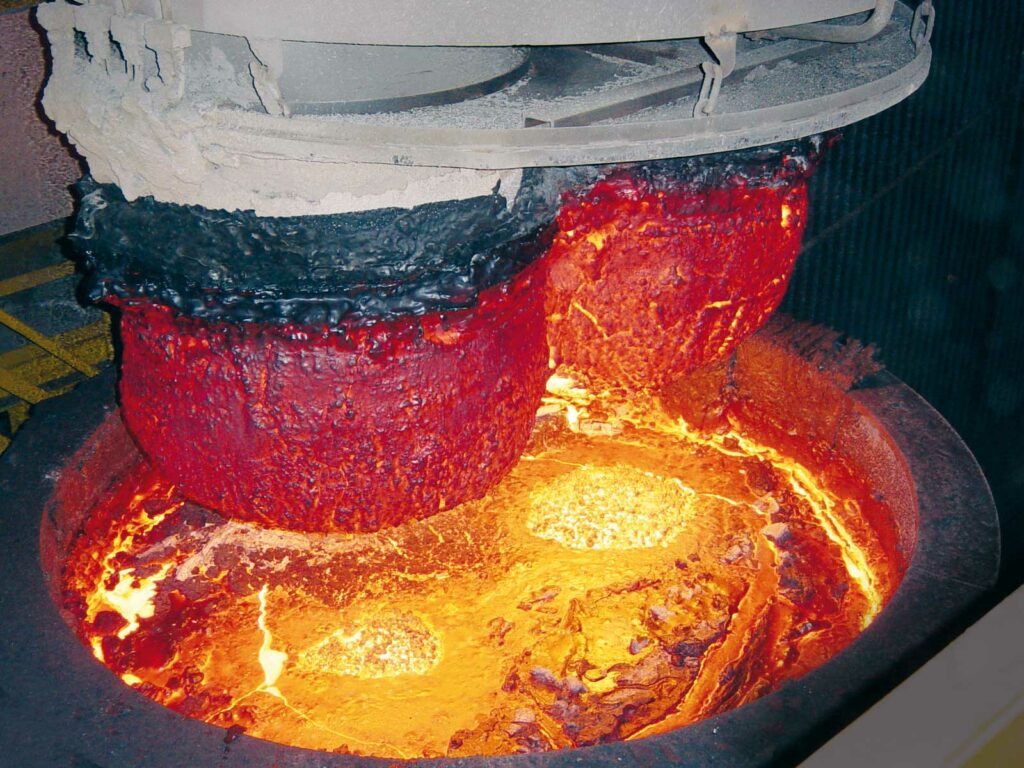This post is also available in: 简体中文 (Chinese (Simplified))
Steelmaking papers will be presented by Primetals Technologies specialists at the ESTAD Congress covering the topics of electric steelmaking, converter steelmaking, stainless steelmaking and secondary metallurgy.
Start-up and Operational Results of the EAF Quantum Furnace at Tyasa
Principal author: Dr. Jens Apfel
Paper number: 213
This paper describes the operational results of the world’s first minimill equipped with an EAF Quantum furnace that was started up at Tyasa in Mexico on May 7, 2014. Several design concepts of this new technology are also presented. With the new shaft-type electric arc furnace, Primetals Technologies has demonstrated the competence to support steelmakers with respect to overall process efficiency, improved productivity and low operational costs.
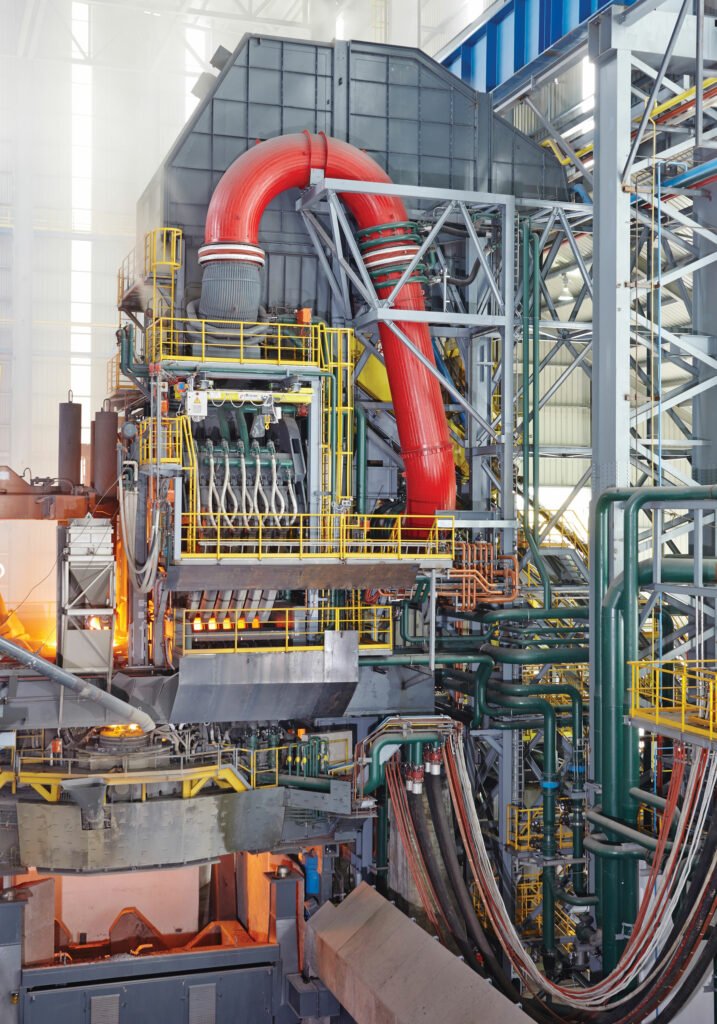
Intelligent and Holistic Electric Steelmaking
Principal author: Dr. Martin Fleischer
Paper number: 210
In order to remain competitive in a challenging business environment and to increase operational safety, steelmakers have to consider all factors, including raw materials and consumables, in a holistic process- control system. EAF transparency can be increased through a high level of automated functions and processes, as well as with the use of the latest measurement and analyzing technologies. EAF Heatopt serves as the kernel of a holistic approach in EAF steelmaking. This dynamic process-control system for all material flows has been designed to fulfill the need for reproducible efficiency, and it takes into consideration all relevant factors for profitable steelmaking. Scrapopt and Chargeopt – further automation solutions for scrap and material handling and charging, respectively – complete the holistic approach. All of this, combined with intelligent and closed-loop control algorithms and Level 2 process guiding at an extraordinary high level of automation, gives the operator the possibility of handling, modifying and optimizing the entire process.

EAF Modernization to Maximize Power Input
Principal author: Patrick Zipp
Paper number: 209
In electric arc furnaces (EAF), high performance and improved productivity can be achieved by fully utilizing existing transformer capacity in combination with a rigid electrode lifting system. Applying the right process know-how also leads to a generally uniform heat-load operation. The furnace must be designed in such a way that the electric transmission path to the arc results in a maximum power input. The installation of a more powerful transformer with a suitable high-current system up to the electrodes is another possibility to increase melting capacity. Cycle times during power-off and power-on times may be reduced with faster, single movements made possible with new hydraulic settings.
The latest EAF modernization developments to increase plant performance result in higher productivity, lower conversion costs, operation with a symmetrical power input, decreased refractory wear, improved plant availability and a longer plant lifetime. This paper reviews the results of the latest EAF modernizations performed by Primetals Technologies to attain maximum electrical power input.
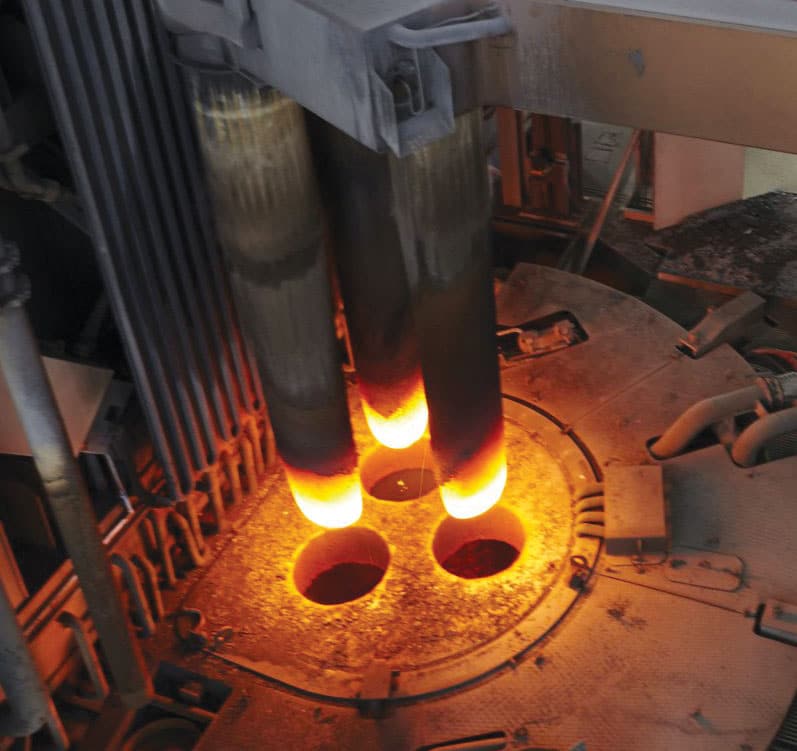
Influence of Polyatomic Gases on the Physical Properties of the Arc Plasma in an EAF
Principal author: Dr. Thomas Matschullat
Paper number: 230
Process conditions and consumption figures in electric arc furnaces (EAF) can be considerably improved through the introduction of additional gases into the plasma environment of a furnace. With an annual electrical energy consumption on the order of 600 GWh for a typical EAF, there is substantial potential for enhancing overall performance and reducing costs. The size and power requirements of conducting the related experiments, however, necessitates the substantiation of theoretical considerations through detailed simulation models before testing. Hence, a transient, 3-D physical model has been implemented, which is suitable for arc simulation of AC and DC arcs at currents up to 70 kA and even more. Developed using COMSOL, the model incorporates a radiation transport solver based on net radiation coefficients as well as on temperature-dependent material properties (electrical, heat conductivity and heat capacity). These are calculated in an additional simulation module for the relevant parameter ranges. Different gas compositions have been modeled, taking into account a standard furnace atmosphere typically consisting of 30% CO, 10% CO₂, 5% H₂, and 55% N₂. Different monatomic and molecular gases have been modeled (Ar, CO₂, N₂, and CH₄) at concentrations of between 0% and 80%. Also, Fe vapor at concentrations of between 0% and 4% have been considered in these simulations.
The simulations offer spatially and temporally resolved insight into the relevant arc plasma parameters. Of particular interest are macroscopic process parameters such as arc voltage and electric field inside the arc, because these parameters can be easily related to experimental results. However, other parameters such as temperature and current density distributions for different arc currents and gas compositions are also of particular interest. The simulations show that EAF arcs can be influenced substantially using additional gases, which can lead to an increase in the arc length at fixed arc voltages on the order of 25%.
Controlling the Electric Arc Properties in an Industrial AC EAF Using Additional Gas Flows: Results and Next Steps
Principal author: Dr. Thomas Matschullat
Paper number: 229
Electric arc furnaces (EAF) represent an important plasma application in which the process requirements can be better fulfilled by introducing additional gas species. The usual furnace atmosphere, which is mainly composed of nitrogen and carbon monoxide, allows for acceptable arc operation. Nevertheless, there are considerable tuning opportunities to decrease energy consumption and flicker, while at the same time increasing productivity as a result of reduced process time.
A detailed simulation of arc plasma properties using different working gases was carried out. Initial verification trials were performed at an 4 MVA AC EAF at Dörrenberg Edelstahl GmbH in Engelskirchen, Germany. The furnace has a tapping weight of approximately 12 tons, and it is used for re-melts and the production of special steels for tools. The addition of argon and nitrogen resulted in arc length extensions. With argon, a much smoother melt-down procedure with the reduction of flicker, especially in the case of pressed scrap packages, was observed. Using natural gas, a shortening of the arc length by up to 20% is possible during flat-bath operation. Different campaigns related to the needs of the Dörrenberg process show significant potential for process optimization. The technique of gas injection into an EAF may also offer significant advantages for other electric steel producers.
Superior Flicker Reduction with SVC PLUS – Operational Experience
Principal author: Björn Dittmer
Paper number: 235
The SVC PLUS is a static synchronous compensator – commonly known as STATCOM – which is based on a voltage source converter (VSC). It forms a source or sink of reactive power, that is, it generates inductive or capacitive reactive power. The SVC PLUS uses three delta-connected series connections of individual modules (a multi-level converter), each comprising an IGBT bridge with its individual capacitor as the power source. The number of series- connected modules is determined by the voltage level to which the VSC is connected. The SVC PLUS is a FACTS device (Flexible AC Transmission System), commonly used for power-factor improvement and voltage stabilization. Its fast response time as a result of fast switching of the IGBTs and the possibility to connect directly to a medium-voltage bus bar led to the idea to apply it also for flicker reduction, especially for electric arc furnaces (EAF). The need for better flicker performance than provided by classic SVCs is increasing worldwide due to the wish to operate larger arc furnaces on weaker networks, along with increasingly stricter power-quality regulations. Around two years ago, the first SVC PLUS system for flicker reduction and reactive power compensation of an EAF went into operation. The original challenging expectations were met: much better flicker reduction than classic SVC systems, lower losses than conventional STATCOM solutions, excellent wave shape of the current output and real redundancy of the VSC power modules. Meanwhile, eight installations are in commercial service, two of them as TWIN SVC PLUS (two VSCs connected in parallel). One advantage of the modular multilevel converter design of the SVC PLUS technology is the very fast dynamic reaction in combination with low switching frequency of the individual semiconductors. This property enables excellent flicker mitigation performance and low converter losses. These and other results from operation of the SVC PLUS systems are described in this paper.
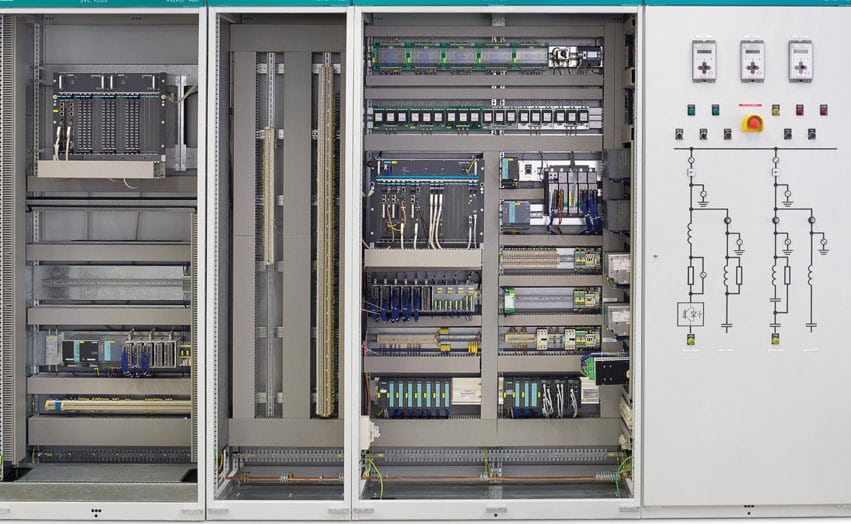
Next-Generation Electrode Control Systems – First Operational Results
Principal author: Christoph Sedivy
Paper number: 247
Within the last two years a new generation of electrode control systems has been developed by Primetals Technologies. It combines the advantages of two well-known solutions, Arcos and Simelt, in a newly designed hard- and software concept. Existing hardware platforms have been consolidated and new regulation strategies have been developed. Advanced functionalities are integrated in the system, which are based on state-of-the-art control philosophies such as impedance, current and arc resistance. The aim is to offer the most modern electrode control system available on the market. Results include more accurate control of electrode movements; improvements with respect to the overall performance of the AC EAF; and reductions in the specific energy consumption, power-on time and electrode consumption. A user-friendly design with many easy-to-understand functionalities is also offered as a central part of the new product. It comprises an integrated condition-monitoring system together with key performance indicators, which allow permanent diagnostics of the EAF to be carried out and much more. This paper describes the new concept and presents initial operational results from a pilot installation.
DC EAF Modernization with the Fin-type Anode
Principal author: Patrick Zipp
Paper number: 208
Improved performance and production efficiency can be achieved in DC electric arc furnaces (EAF) by implementing the latest anode technology in combination with the associated process know-how. The modernization concept described in this paper can lead to an extended service life of the anode and a host of additional benefits that include:
- Furnace operation with a stable arc and without
arc disruption - Avoidance of arc deflection and consequently hot spots
- Higher power input with a low current density
- Improved anode heat transfer without the need for water cooling
- Facilitated and fast exchange of the bottom anode
- Performance of anode exchange while keeping the high-current line connected with no risk of anode damage
- Safer working conditions as no cooling water is required
The latest features of DC EAF modernizations are described, including operational performance results.
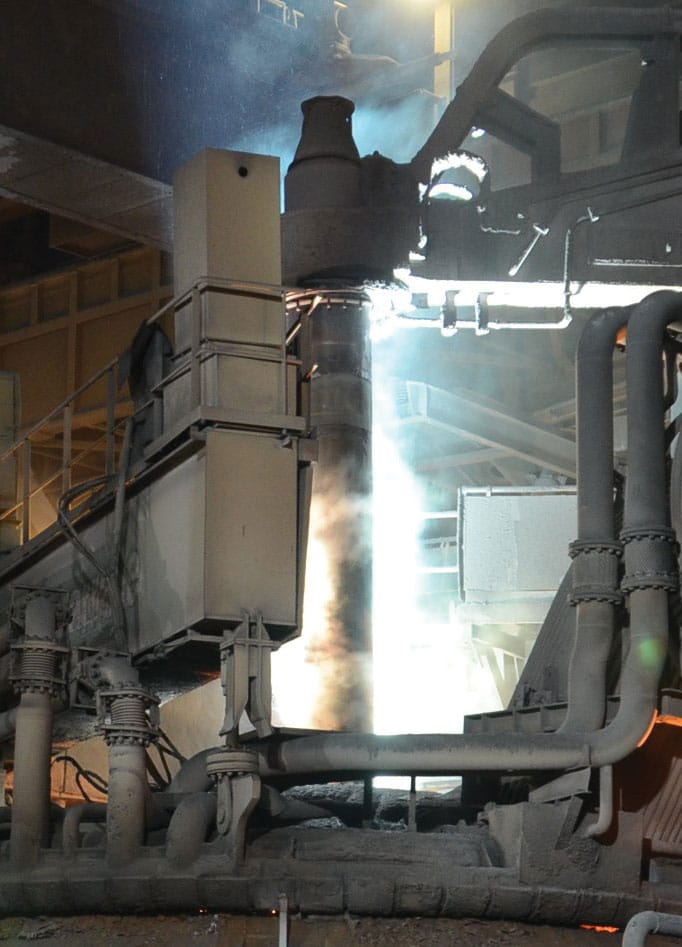
A New Approach for Improved Electric Arc Furnace Dedusting
Principal author: Dr. Thomas Steinparzer
Paper number: 260
The new approach of Primetals Technologies with respect to offgas dedusting is to create an integrated solution for the complete dedusting line. This is both cost- and energy-efficient. With the competency to provide the full scope of EAF gas-handling systems, an overall optimized dedusting solution is offered that leads to reduced offgas volume flows and to a lower energy demand of each aggregate. Additionally, a modular heat-recovery system is an integral part of the offgas system. Hence, the investment costs for the offgas dedusting system are quickly amortized. Furthermore, improved automation solutions help to minimize the operating costs of offgas systems. Innovations, improvements and results are described in this paper.

Efficient Scrap and DRI Melting with the Jet Process
Principal author: Dr. Gerald Wimmer
Paper number: 266
As a result of decreasing prices for scrap and direct-reduced iron (DRI) together with efforts to further reduce the CO₂ footprint of steelmaking, integrated steelmakers are becoming more and more interested in increasing the scrap or HBI quantities charged to the converter. The Jet Process was therefore developed to enable higher and variable scrap and HBI charging rates. The process comprises a bottom-blowing converter with coal injection, combined with a postcombustion system. An oxygen-enriched hot blast, generated in a pebble heater, ensures high postcombustion rates and a good heat transfer from the gas to the bath. In this way, the chemical energy of the injected coal can be utilized to the maximum extent possible. Because the total amount of injected coal can be flexibly varied within a very wide range, the scrap- and/or DRI-charging rates into the converter can lie between 0% and 70%. Several economically attractive market opportunities for this technology exist, such as for plants where scrap or hot-briquetted iron (HBI) are relatively inexpensive compared with hot metal. Additional opportunities can be found where ironmaking bottlenecks occur – whether due to planned increases of total production, a blast furnace blowdown, or restrictions of iron production due to CO₂ limitations. In all of these cases, the Jet Process can be used to increase the total converter output while keeping hot metal consumption to a minimum and avoiding cost-intensive investments to increase iron production capacity. Primetals Technologies has developed and optimized the Jet Process for commercial industrial application. Process features and a detailed economical evaluation are presented in this paper, together with results from tests and first industrial applications.
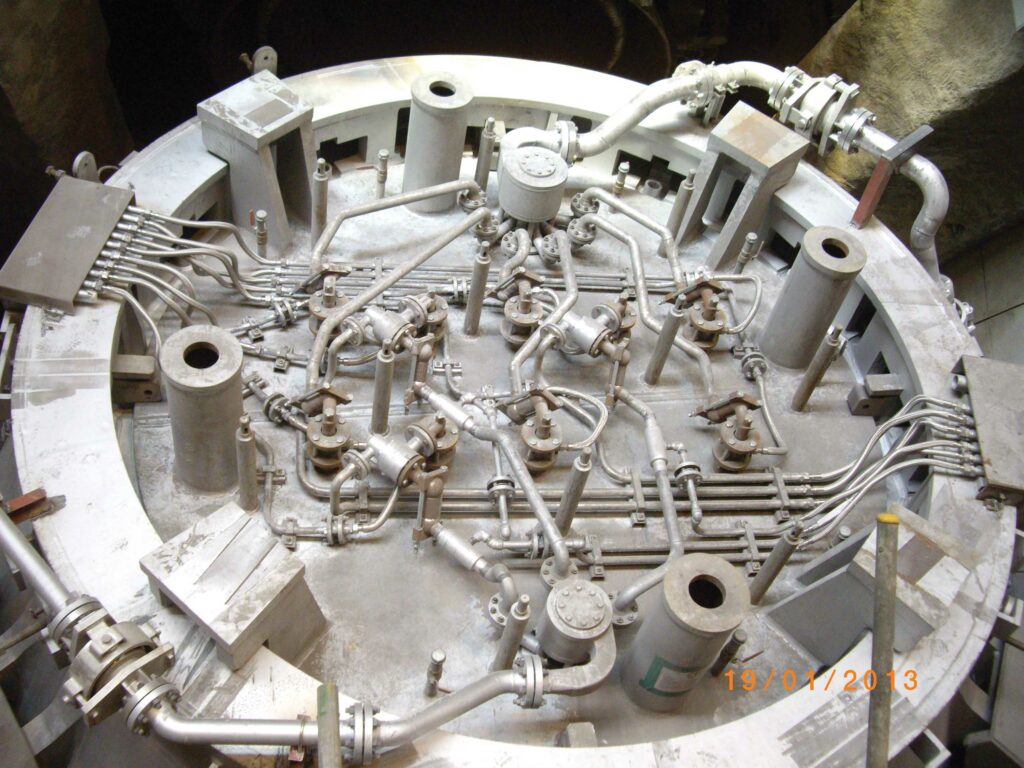
The Latest Innovations in Converter Process Modeling
Principal author: Rudolf Hubmer
Paper number: 202
Carbon steel producers are increasingly being forced to use iron ores with higher phosphorous contents due to declining ore reserves and escalating raw material costs. LD (BOF) converter shops must therefore cope with higher phosphorous contents, which affects steelmaking performance. In stainless steel production, the use of phosphorous-rich ores has led many producers to include a hot metal dephosphorization step for the production of ferritic and manganese austenitic grades – particularly in China.
Such process changes are fully accounted for by the Steel Expert process model package for carbon and stainless steelmaking. Steel Expert comprises dynamic process guidance, a prediction model to simulate the complete production process, and a number of setpoint models for the different production steps. The extended functionality for LD (BOF) converters features an enhanced MgO and lime saturation model; calculation of the weight and chemical composition of the solid and liquid slag; and automatic blow-stop functionality for LD (BOF) converters based on sublance measurements. The functionality of the AOD converter has been upgraded through the introduction of a desiliconization phase for premelts with a high silicon content, heating with FeSi, and with intermediate deslagging. In addition, a completely new human-machine interface (HMI) for the Level 2 automation system has been developed and successfully installed in recent projects. Model predictions were verified against laboratory samples and measurements. In this paper, the implemented innovations, improvements and results are presented in detail, including the achievable savings by applying this Level 2 process-optimization system.
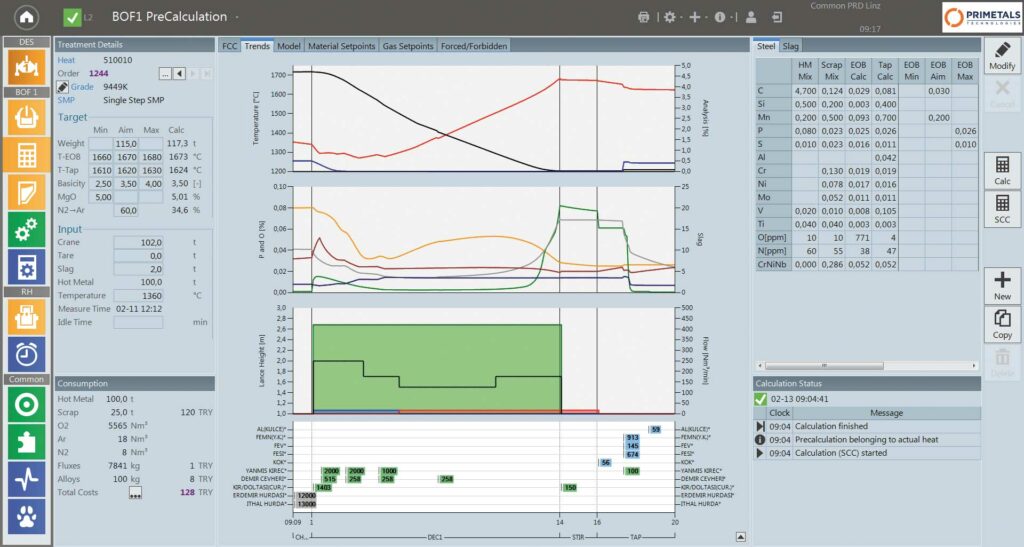
Innovative Automation Packages for Converter Steelmaking Plants
Principal author: Thomas Kurzmann
Paper number: 204
Intelligent automation and process-optimization systems are decisive factors for assuring excellent product quality, enhanced safety and increased plant performance in steel mills. This paper covers various recently developed innovations from Primetals Technologies for improved and cost-efficient converter steelmaking, three of which are outlined in the following. One of the main electrical energy consumers in a LD (BOF) plant is the electrostatic precipitator of the dry-type primary dedusting system. As shown by the first installations of the Precon (Precipitator Economizer) system, substantial energy savings can be achieved. Another issue in steel mills is that a broad range of equipment is used, which has to be monitored and checked using specialized sensor systems to guarantee proper functioning and a long lifetime. The new Acoustic Expert system from Primetals Technologies is based on measuring noise, which is emitted by almost every device or process. The application of this system considerably facilitates the reliable and efficient monitoring of plant equipment. Limited equipment accessibility or other technical restrictions often result in inaccurate or delayed measurement data. Wiplant, a wireless, self-organizing network system, overcomes these limitations. A broad range of data transmissions from previously inaccessible areas is now made possible, thus opening new opportunities for fast and reliable data transmission. Features and advantages of these technical solutions are highlighted in this paper, including the achievable operational improvements.

Optimized Energy Recovery from the Converter Cooling Stack through Dynamic Simulation
Principal author: Dr. Thomas Steinparzer
Paper number: 259
Maximum energy efficiency in a steel mill is a key factor to minimize costs. For example, cooling stack systems for basic oxygen furnaces (BOF) use the offgas heat for steam generation and therefore create value. However, the circulation pumps of the cooling stack boiler system have a high electric power consumption. Therefore, waste-heat boiler systems that are based on the natural circulation of the water/steam mixture instead of forced circulation using pumps lead to further improvements in energy efficiency. Nevertheless, an issue that arises in connection with natural circulation systems is that strong fluctuations in offgas temperature and flow may affect the performance of a boiler system. Unstable water flow regimes have to be avoided to ensure the reliable and stable operation of the cooling stack. But predicting these flow instabilities is extremely complex. On the basis of its extensive experience in this field, Primetals Technologies has the competence required to perform dynamic simulations of two-phase flows within boiler systems. The advanced process simulation model developed by the company comprises dynamic process behavior, a prediction model for simulating the complete cooling stack system – including the steam drum and steam buffers – and the possibility to analyze various automation setups. Thus, the transient behavior of the water/steam flow can be investigated in detail. These simulations help to achieve an optimized cooling-stack design for each BOF. The theoretical simulations have been successfully compared with measurement data and the experience acquired from commissioning a natural circulation cooling stack. It can be shown that the dynamic simulation model portrays the circulation flows with a high degree of accuracy. In this paper the simulation model and the simulation results of the natural cooling stack system are presented. Furthermore, measurement data of a cooling stack and a comparison with simulation results is discussed.
A New Method to Process Converter Slag for Use in the Cement Industry
Principal author: Dr. Gerald Wimmer
Paper number: 267
During typical LD (BOF) converter steelmaking roughly 120 kg of slag are produced per ton of tapped steel. Conventional uses of LD converter slag from steelmaking, such as in construction or to produce fertilizer, are becoming less attractive due to stricter environmental regulations, decreasing market volume and falling prices. Simply dumping slag in the slag yard is no longer acceptable at many steel plants, as it generates dust, incurs energy loss and requires considerable land space. Economically attractive methods to process and market slag, in addition to closed processes for slag modification and handling to minimize dust emissions and space requirements, are therefore gaining interest with steelmakers. A promising development underway by Loesche, Primetals Technologies and partners is the modification of LD slag so that it can be used as a cement clinker substitute. A particular highlight of this technique is that almost the entire metallic content of the slag can be recovered. The process comprises three steps: In the first step the iron oxides in the slag are recovered in a reducing atmosphere and the slag composition as required for the formation of clinker is adjusted. This is done by coal injection, the addition of additives (when required) and electrical heating. In the second step the modified liquid slag is solidified in a way that a considerable mass percentage of alite (C₃S) is formed. This imparts the hydraulic properties to the slag that allows it to be used as a cement clinker substitute. In the last step the solid slag is ground and the remaining iron content is recovered. A detailed description of the process is presented, including mass, energy and CO₂ balances, as well as results from testing. Finally, an economical evaluation of the entire process is described in detail.
A New Method to Process Converter Slag for Use in the Cement Industry
Principal author: Dr. Gerald Wimmer
Paper number: 267
During typical LD (BOF) converter steelmaking roughly 120 kg of slag are produced per ton of tapped steel. Conventional uses of LD converter slag from steelmaking, such as in construction or to produce fertilizer, are becoming less attractive due to stricter environmental regulations, decreasing market volume and falling prices. Simply dumping slag in the slag yard is no longer acceptable at many steel plants, as it generates dust, incurs energy loss and requires considerable land space. Economically attractive methods to process and market slag, in addition to closed processes for slag modification and handling to minimize dust emissions and space requirements, are therefore gaining interest with steelmakers. A promising development underway by Loesche, Primetals Technologies and partners is the modification of LD slag so that it can be used as a cement clinker substitute. A particular highlight of this technique is that almost the entire metallic content of the slag can be recovered. The process comprises three steps: In the first step the iron oxides in the slag are recovered in a reducing atmosphere and the slag composition as required for the formation of clinker is adjusted. This is done by coal injection, the addition of additives (when required) and electrical heating. In the second step the modified liquid slag is solidified in a way that a considerable mass percentage of alite (C₃S) is formed. This imparts the hydraulic properties to the slag that allows it to be used as a cement clinker substitute. In the last step the solid slag is ground and the remaining iron content is recovered. A detailed description of the process is presented, including mass, energy and CO₂ balances, as well as results from testing. Finally, an economical evaluation of the entire process is described in detail.
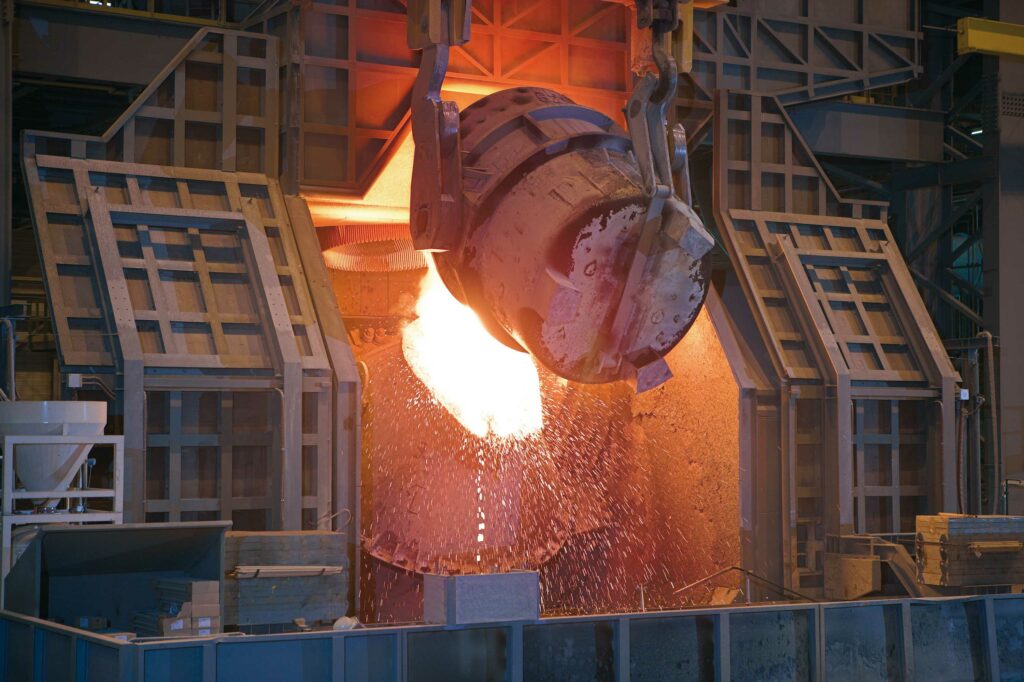
A New Vibration Damper System for AOD Converters
Principal author: Dr. Gerald Wimmer
Paper number: 264
The AOD process is the current standard solution all over the world for converter-based stainless steelmaking. During the process, gas is blown via side tuyeres into a vessel filled with liquid metal, causing intensive reactions. As a consequence, AOD converters tend to vibrate strongly, which increases maintenance costs and shortens equipment lifetime. To reduce such vibrations, a simple, redundant and highly efficient damper system was developed. In a first step, detailed analyses of the AOD vibration phenomenon were done in cooperation with universities using FEM and CFD simulations, laboratory experiments and on-site measurements in several plants. This analysis provided a full understanding of the characteristics of such vibrations. With this understanding, a hydraulic damper system was developed by means of virtual prototyping and testing. Finally, a prototype was built and after intensive laboratory testing the first damper system was successfully implemented in a steel plant in China. Vibration measurements before and after installation of the damper show a reduction of converter vibrations by more than 50%. The robust damper system has been in full operation now for more than a year with almost 100% availability. The cost-effective and patented damper design is suitable for installation in new plants and existing converters. The basics of AOD vibration, the design of the damper system and results from operations are presented in this paper.
The Latest Technologies for Vacuum Degassing Plants (VD/VOD and RH/RH-OB)
Principal author: Andreas Harter
Paper number: 211
The demands placed on modern steel plants are continually changing. This is also true in the secondary metallurgical area where installed equipment and systems need to be regularly updated to ensure optimized and efficient operations despite variations in production speed, material flow and overall plant logistics. Other trends and developments in this area need to be considered by steelmakers. For example, during the past few years, dry mechanical pump systems are increasingly being installed in vacuum degassing plants, especially for heat sizes below 150 t with pure degassing operation (VTD). Safety issues need to be addressed during oxygen blowing in VOD plants equipped with mechanical pump systems. A new highly compact lifting system for RH degassers from Primetals Technologies combines ladle lifting and vessel exchange in a single unit. Referred to as RH CVL (Combined Vessel and Ladle lifting), this solution improves the flexibility and logistics in a steel mill in that the unit can be accessed from both sides and allows a “drive-through” material flow – even in areas inaccessible for cranes. This paper covers various modernization solutions and the latest technological developments for vacuum degassing plants.
